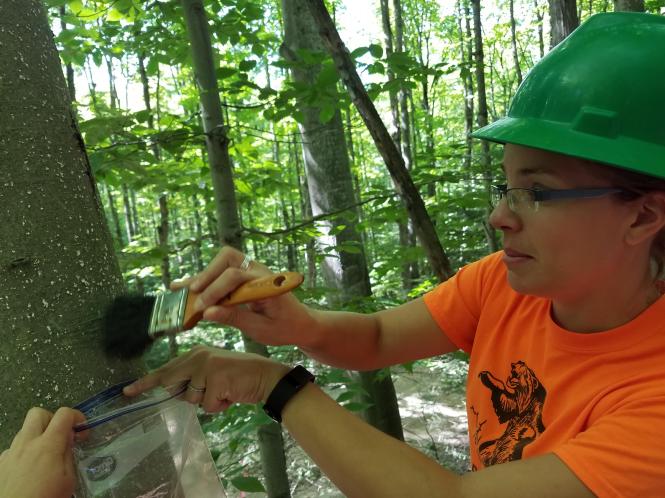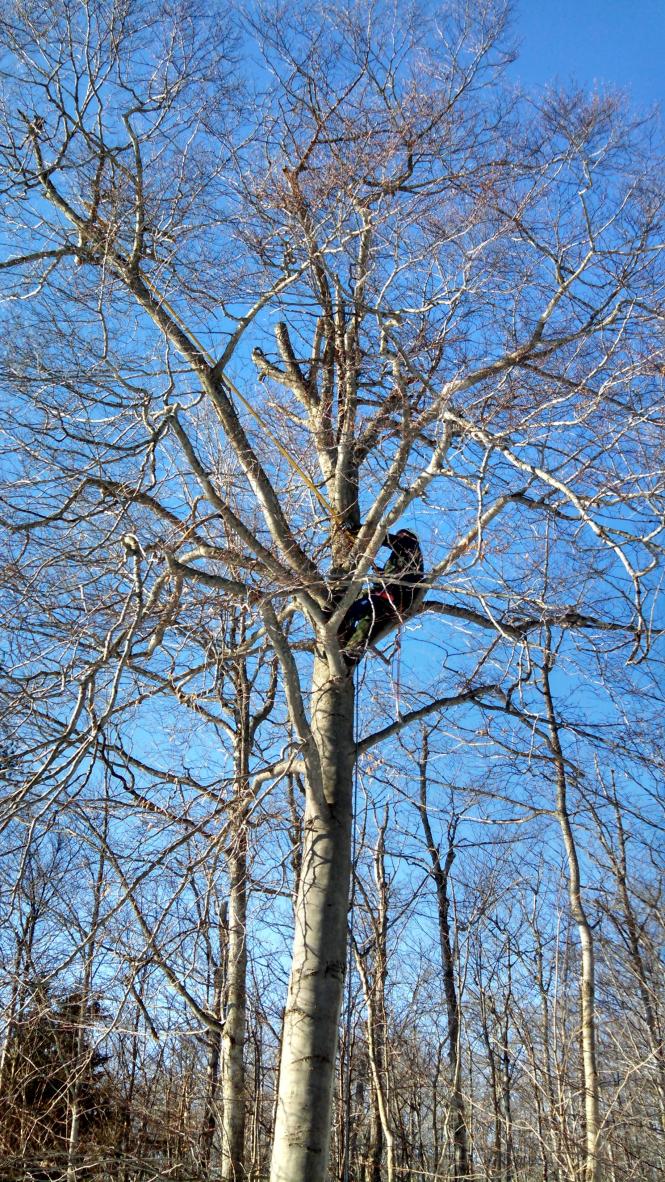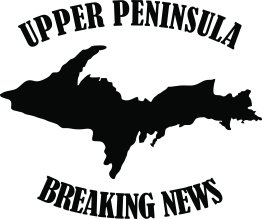U.S. Forest Service Seeks Resistant Beech in Upper Peninsula and Wisconsin
***U.P. Breaking News is not one of your press release news services – however we will always make exceptions when it involves the environment – and our precious natural resources in the Upper Peninsula of Michigan. We honor the U.S. Forest Service employees and helpers in all the U.P. national forests – and their efforts around the Midwest.
U.P. Breaking News strongly believes that some of the natural resources in the the U.P. has been destroyed or is now threatened. The U.P. has very little hardwood trees – and mostly fast growing soft wood trees – compared to three decades ago. Our lakes and streams are threatened – and now those who protect us suffer budget cuts.
U.P. Breaking News has worked closely with the forest service in projects by the wonderful nonprofit Cedar Tree Institute in Marquette – and the Rev. Jon Magnuson.
Please read this story and see the great photos
Release Date: Nov 21, 2017
Once a common and majestic presence in our upland hardwood ecosystems, mature American Beech (Fagus grandifolia) are rapidly disappearing from our Upper Peninsula forests. Beginning in year 2000, Beech Bark Disease (BBD) entered the Upper Peninsula and quickly ravaged stands of beech trees. In the wake of this devastation, the US Forest Service conducted salvage operations to utilize Beech prior to its decay.
Then, Hiawatha National Forest (HNF) employees shifted attention to the survey and identification of beech trees resistant to the BBD vector. After a several years of effort with partners, today, we are preparing for the reintroduction of American Beech!
The journey toward this hopeful approach began in 2011, with the initial wave of BBD in full swing in the Upper Peninsula. Genetic studies by Jennifer Koch with the Forest Service’s Northern Research Station (NRS) have shown that when two resistant parents are bred, at least half of the resulting seedlings will be fully resistant, a substantial increase over the 1- 5 % of beech trees with resistance that are typically found in natural forests.
Hiawatha National Forest silviculture staff were invited to participate in a project with USFS’s NRS and Region 9 to survey, identify and propagate BBD-resistant beech trees. The journey toward this hopeful approach began in 2011, when the initial wave of BBD was in full swing in the Upper Peninsula and will culminate with the development of a seed orchard containing the BBD-resistant beech trees identified in the HNF. The seedlings produced by this seed orchard, enriched for resistance to BBD, will be used to restore healthy American beech trees to the HNF.

(Caption: Scale-infested American Beech tree on Hiawatha National Forest.)
“During the survey phase, we conducted 5,600 acres of stand examinations in prime American Beech habitat on the Forest’s east zone, where the disease first hit the National Forest. We located 52 healthy-looking, potentially-resistant trees – trees that lacked signs of infection such as cankers,” said Sam Barnes, a silviculturist on Hiawatha National Forest.
During the 2012 field season, Hiawatha staff field tested these healthy looking trees to see if they were actually resistant to the BBD complex. Beech bark disease involves both beech scale insect (Cryptococcus fagisuga) and a fungal component.
The testing protocol involves an artificial infestation technique in which Beech scale eggs are introduced to apparently healthy trees. A year later, in summer of 2013, Hiawatha silviculturists checked the artificially infested trees.

(Caption: Here Hiawatha forester Chelsea Murawski gathers scale from an infested tree in preparation for the field testing of potentially resistant trees.)
“Nineteen of the 52 trees resisted the infection during that 2012-2013 field test,” said Barnes.
In order to grow new resistant trees that would thrive in our local climate, it was necessary to clone these resistant trees rather than gathering seed, which might be a mix of different non-resistant genotypes. During the winter of 2013/2014, Hiawatha foresters worked with went to great lengths – or rather, heights – to gather numerous small branches from each of the resistant trees.

(Caption: Josh LeDuc, a Hiawatha NF forester, gathers scion by climbing potentially resistant trees. Foresters also utilized marksmanship as a method of obtaining scion by carefully selecting branches and shooting them off.)
Foresters delivered these branches, called “scion,” to the Forest Service’s Oconto River Seed Orchard (ORSO) in Wisconsin. Specialists at ORSO grafted the scions to healthy rootstock and began tending the little trees. A second round of scion-gathering and grafting was done during winter 2014/2015.
The BBD-resistant grafts will be planted in an orchard where they can pollinate eachother. Years later, the seeds these trees produce can be harvested with assurance that both parents were resistant. The seeds will then be grown into seedlings for planting in forests such as Hiawatha National Forest.
“We have begun the hard work of establishing the orchards, but it will be some years before they yield operationally significant amounts of seeds to be grown into seedlings and planted on the landscape,” explained Scott Rogers, Forest Service Orchard Manager at ORSO.

(Caption: USFS Eastern Region Silviculturist, Carrie Sweeney, assisted with gathering the scions for delivery to the agency’s Oconto nursery.)
“We look forward to someday planting and monitoring resistant beech seedlings on the Hiawatha National Forest,” said Sam Barnes, a Forest Service silviculturist, who added that if the trees prove to be resistant, this artificial regeneration could one day bring high quality beech timber products back to the region.

(Caption: Orchard Manager Scott Rogers at the Oconto River Seed Orchard examines completed grafts in the hot-callus grafting system developed by Delaware Ohio NRS.)
The Forest also continues to record potentially resistant trees encountered while performing other work.
“In 2016, we identified and set up field tests on twelve additional trees, with ten of those proving to be resistant. And this year, we set up challenges on thirty additional trees,” said Barnes.
If all goes well, ORSO will supply both state and federal forest managers with genetically diverse, regionally-adapted, BBD-resistant planting stock to carry out management plans for dealing with BBD.
Why is American Beech important? From a wildlife management perspective, the mast and buds of beech trees provide an important food source for many species of birds and mammals. In some Northern hardwood forests, beech is the only mast-producing species and has been linked with the success of black bear reproduction. On the Hiawatha National Forest, beech is by far the major producer of mast. The Hiawatha has only one commercial species of oak and one non-commercial species, but both are minor components compared to beech.
The decline of such a predominant mast-producing species will undoubtedly have a major impact on many different wildlife species. Beech is also valued as a timber product. Its attractive pinkish brown close-grained wood is hard and strong, so beech has been used to make furniture, toys, tool handles, baseball bats and more. In addition to economic and wildlife uses, a mature beech forest provides a beautiful setting for recreation activities.
BBD was first documented in Europe in 1849, and was noticed in eastern North America in the late 1890s. It is not feasible to control the natural spread of BBD because animals and the wind move both the scale and fungus. However, the public can help slow the spread of the disease. Don’t move beech firewood or logs from infested areas to uninfected areas. Once scale infests trees in your area, report new finds and watch for resistant trees.
For more information about Beech Bark Disease, contact a Forester or visit online sources such as
- The USFS “Treesearch” WebPage https://www.fs.usda.gov/treesearch/pubs/43636
- The recent literature review in Forest Ecology and Management at http://www.sciencedirect.com/science/article/pii/S0378112717301470
About the U.S. Forest Service
The U.S. Forest Service is an agency under the U.S. Department of Agriculture, and as such is part of the federal government’s executive branch. The mission of the U.S. Forest Service is to sustain the health, diversity, and productivity of the nation’s forests and grasslands to meet the needs of present and future generations.
The Forest Service manages 193 million acres of land and is the largest forestry research organization in the world. National Forest System lands provide 20 percent of America’s drinking water. The mission of the U.S. Forest Service is to sustain the health, diversity, and productivity of the nation’s forests and grasslands to meet the needs of present and future generations.
For more information, visit www.fs.usda.gov/. USDA is an equal opportunity provider and employer. To file a complaint of discrimination, write: USDA, Director, Office of Civil Rights, Office of Adjudication, 1400 Independence Ave., S.W., Washington, D.C. 20250-9410 or call (866) 632-9992 (toll-free customer service), (800) 877-8339 (TDD), or (800) 845-6136 (TDD in Spanish).


